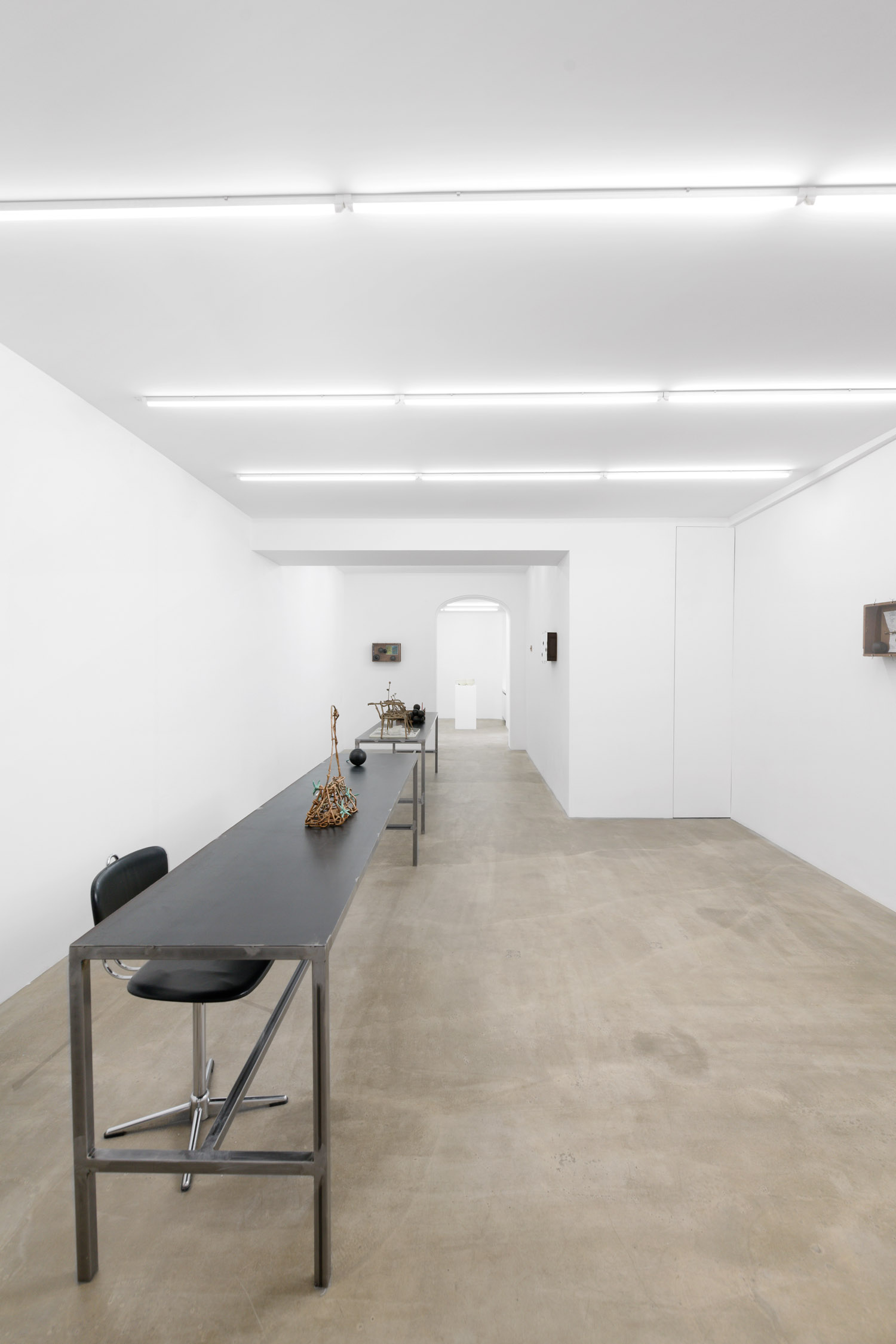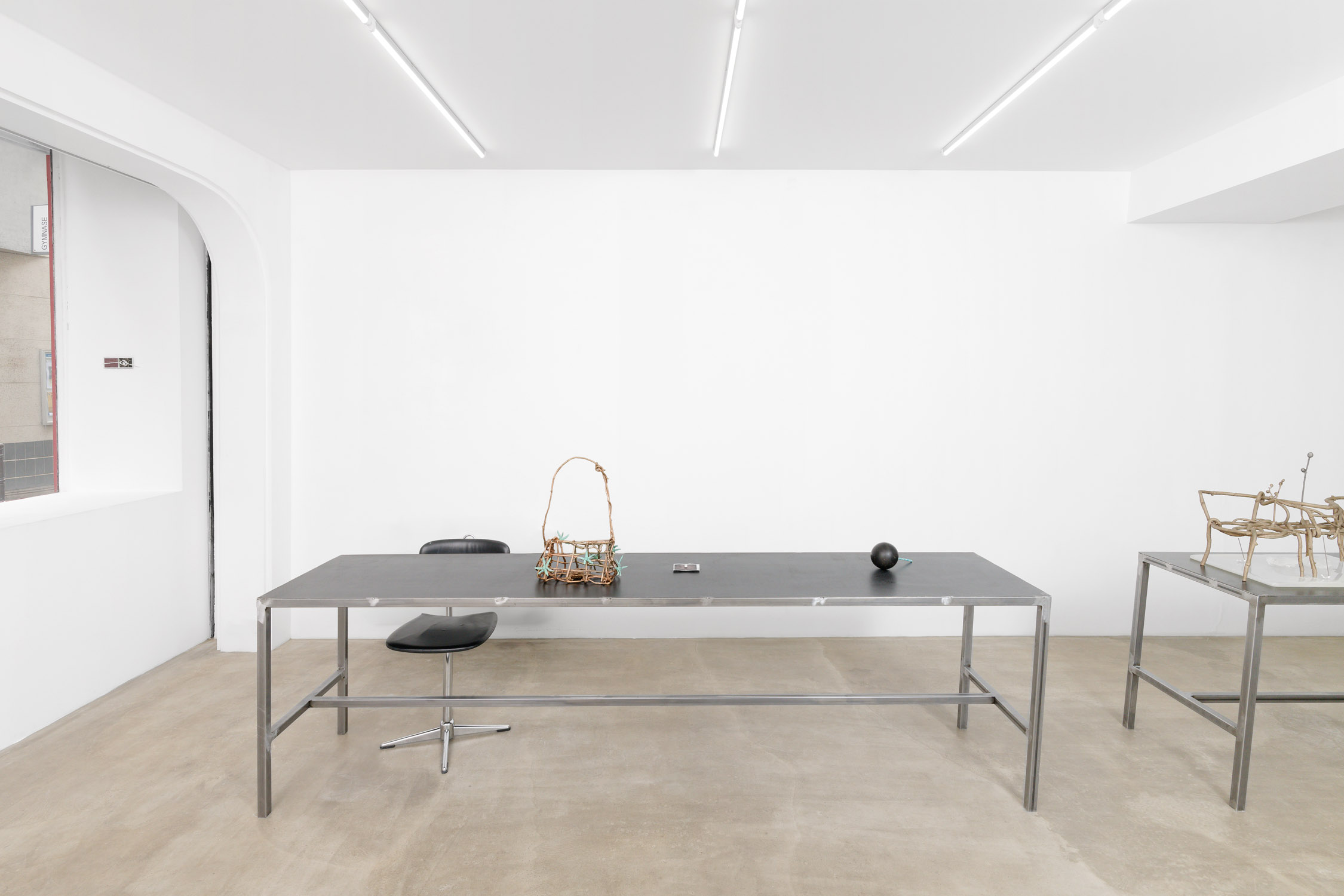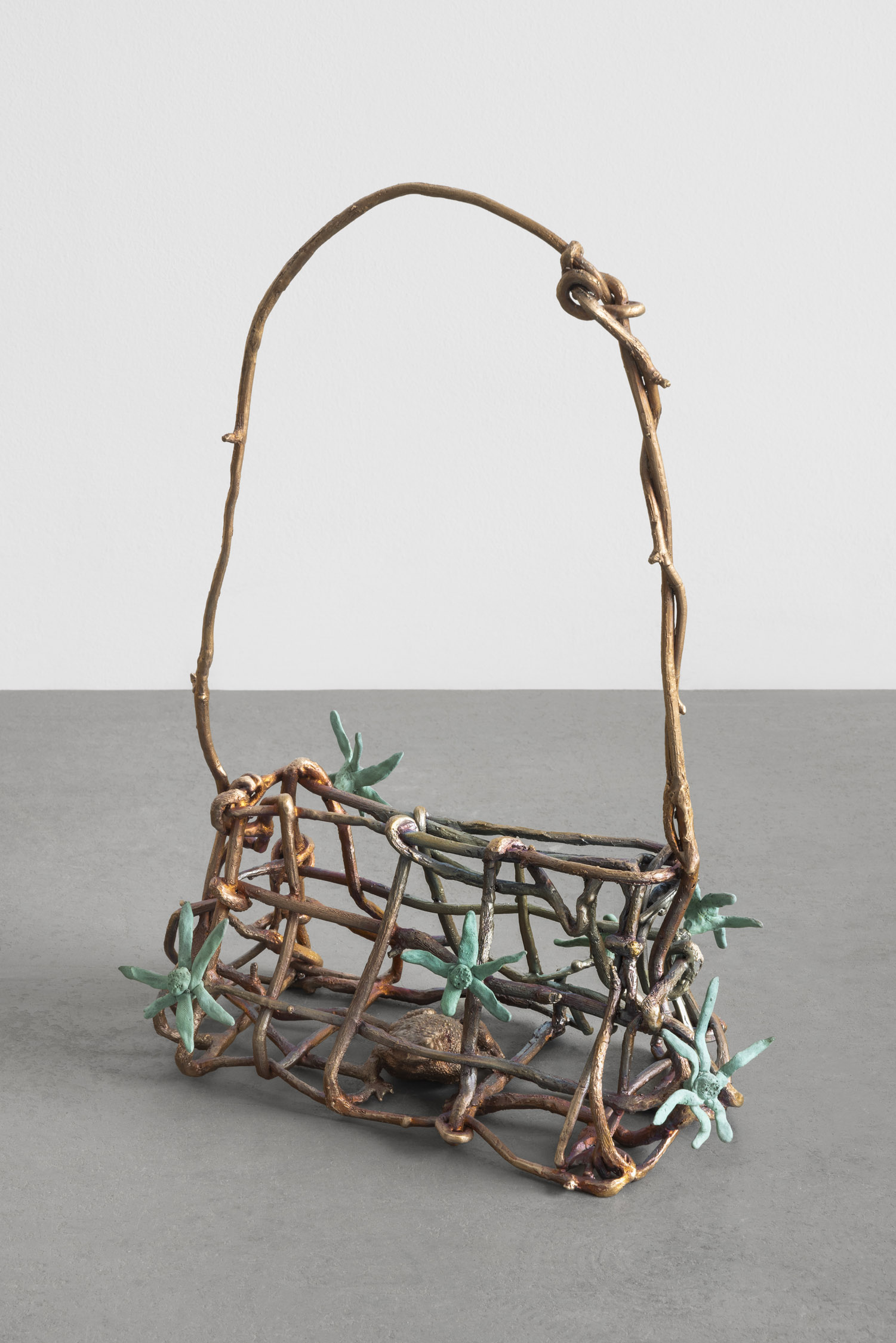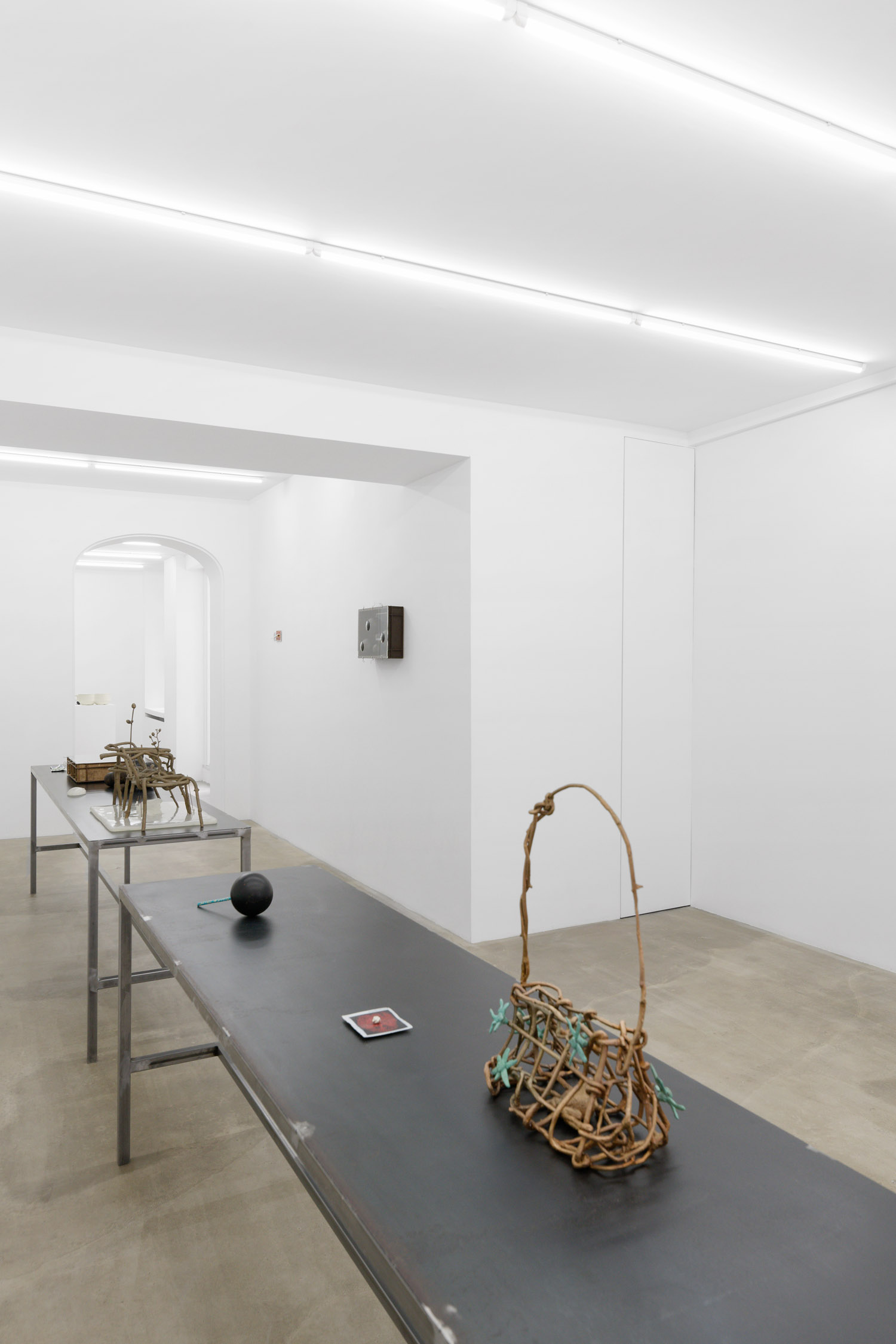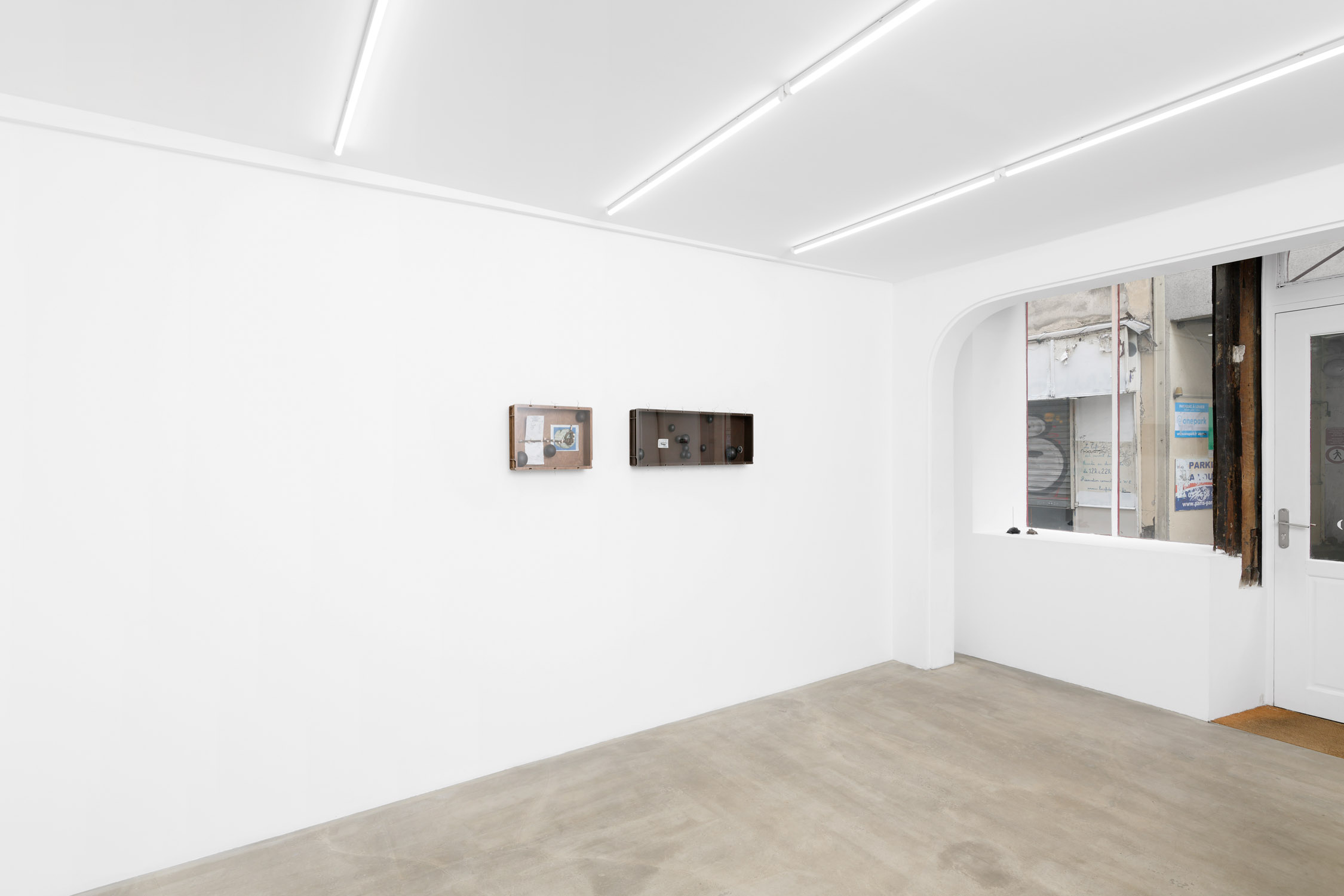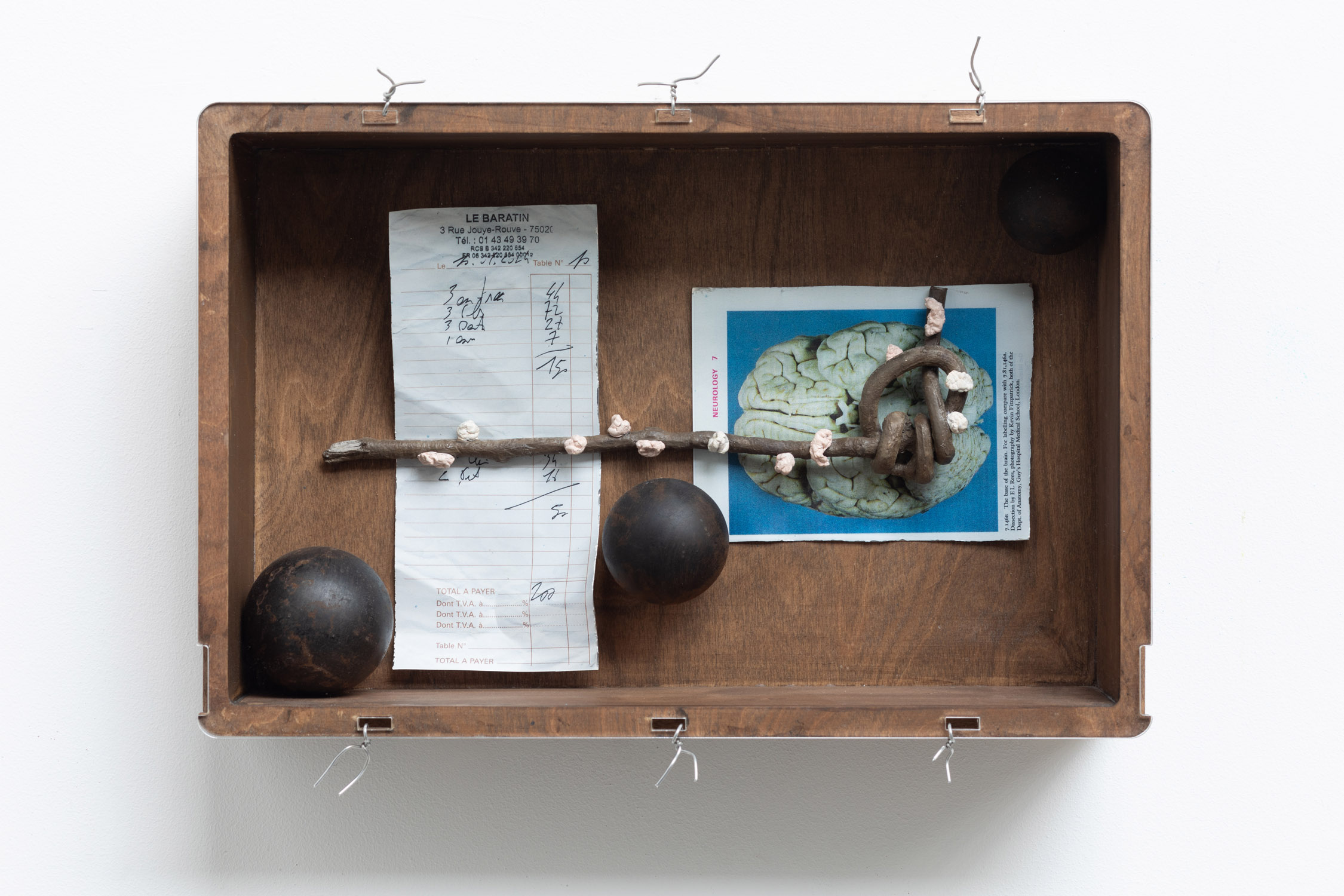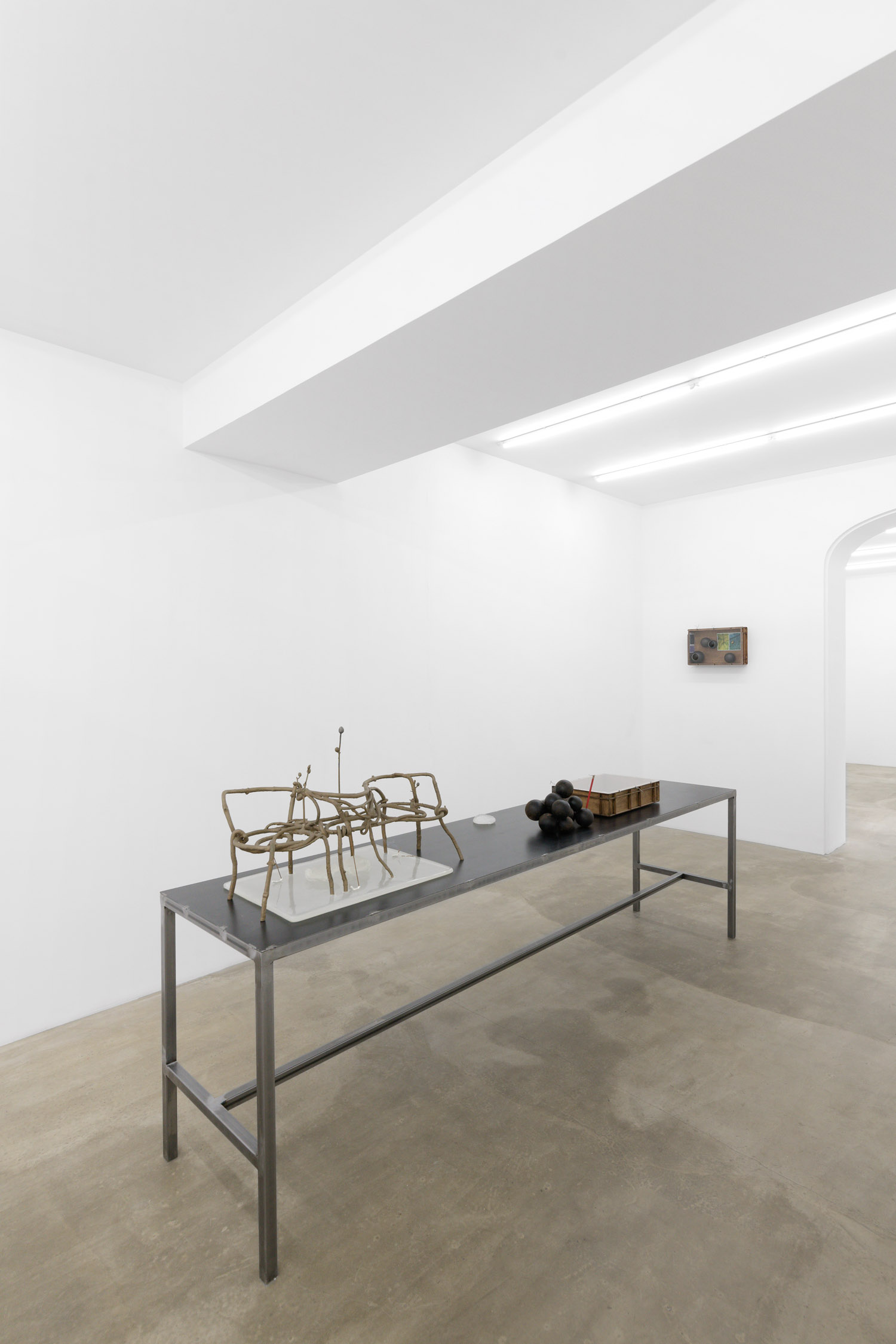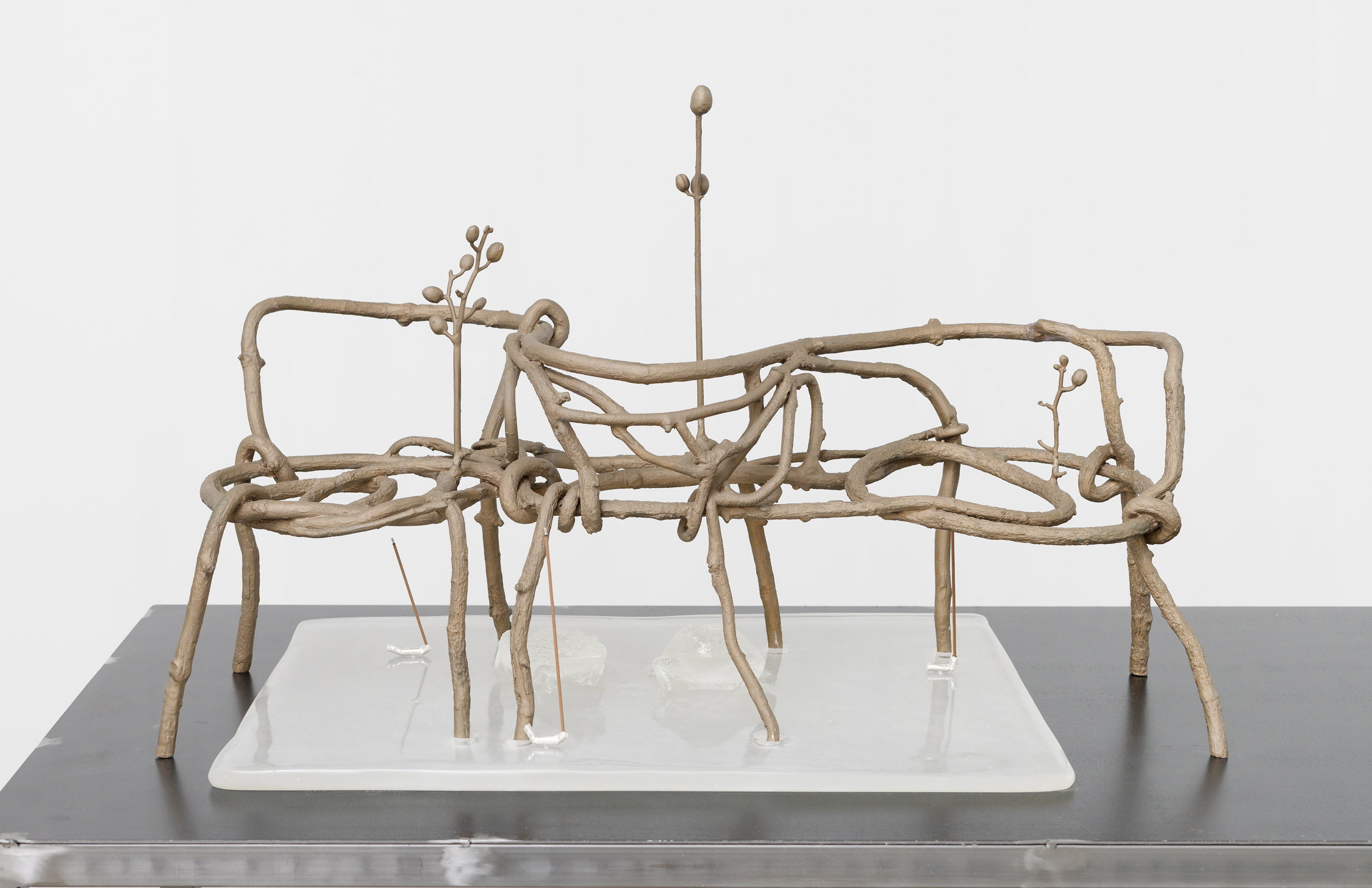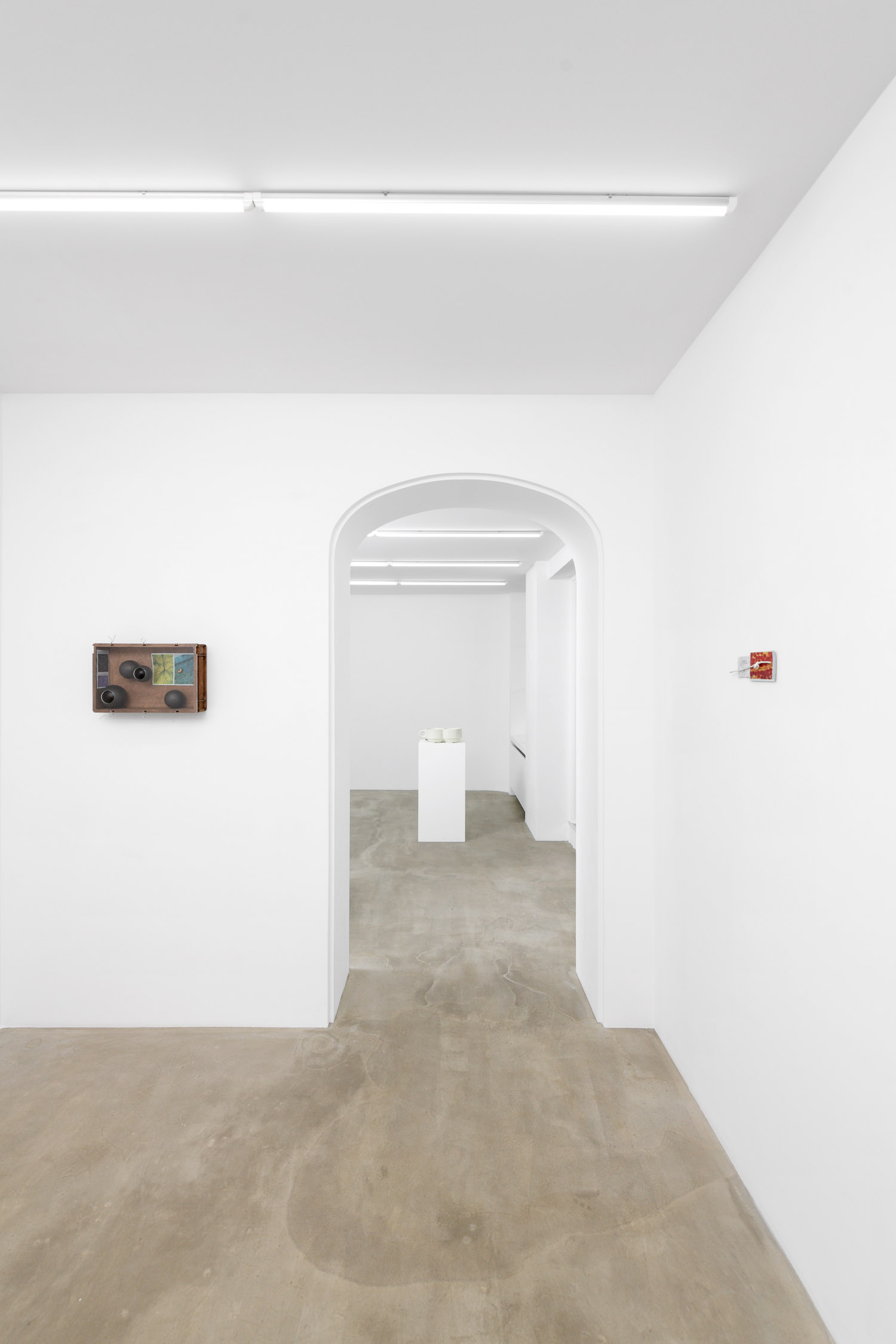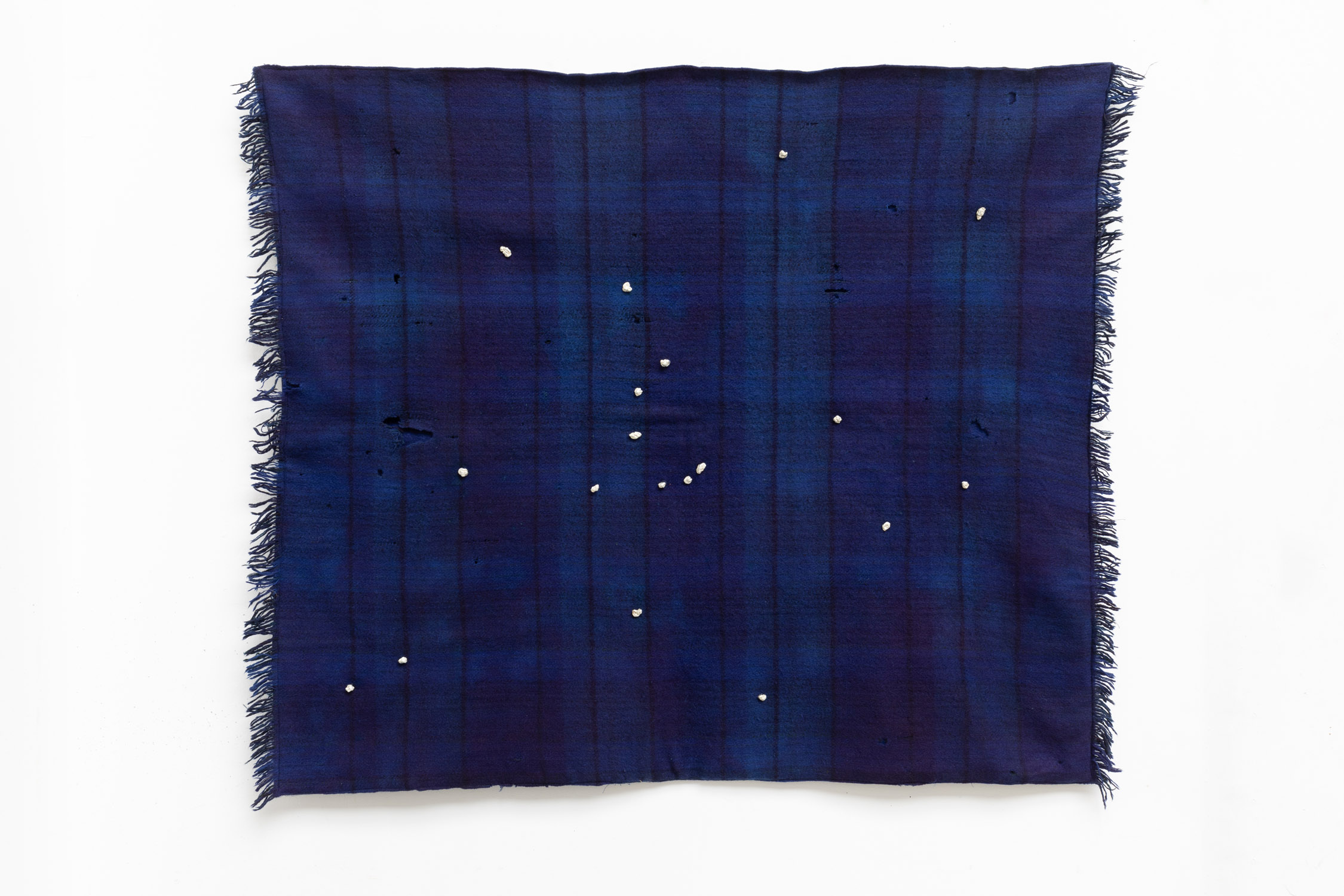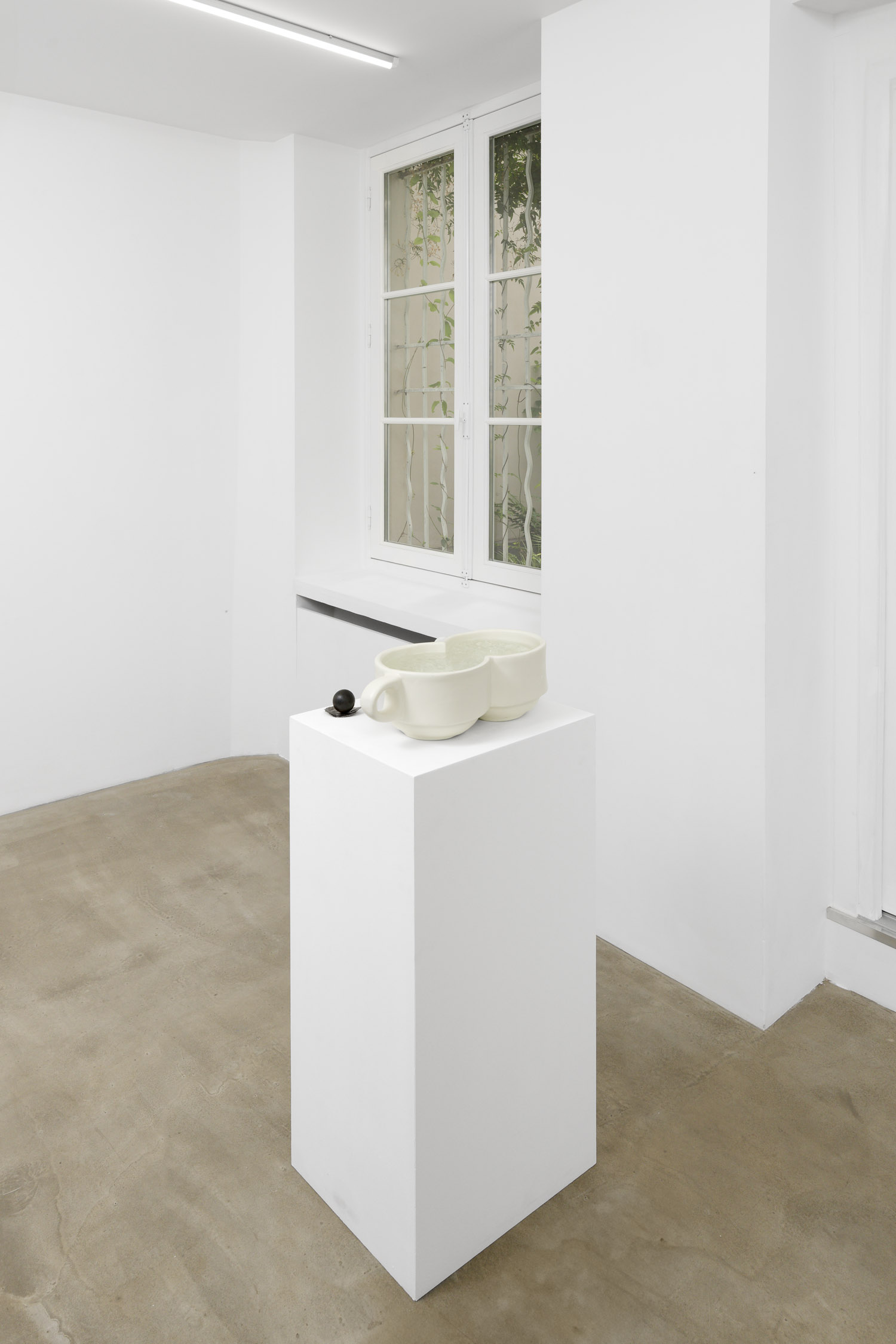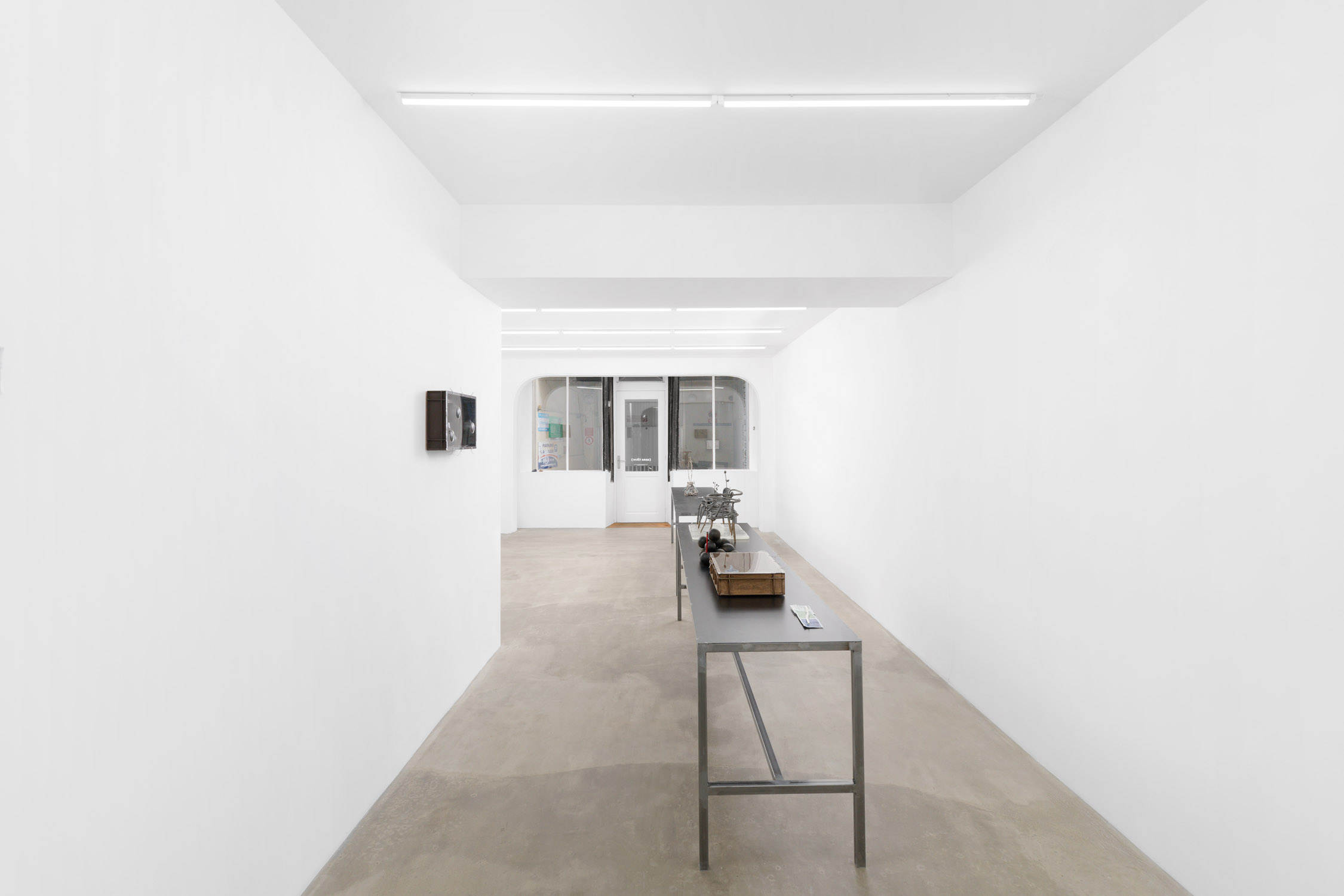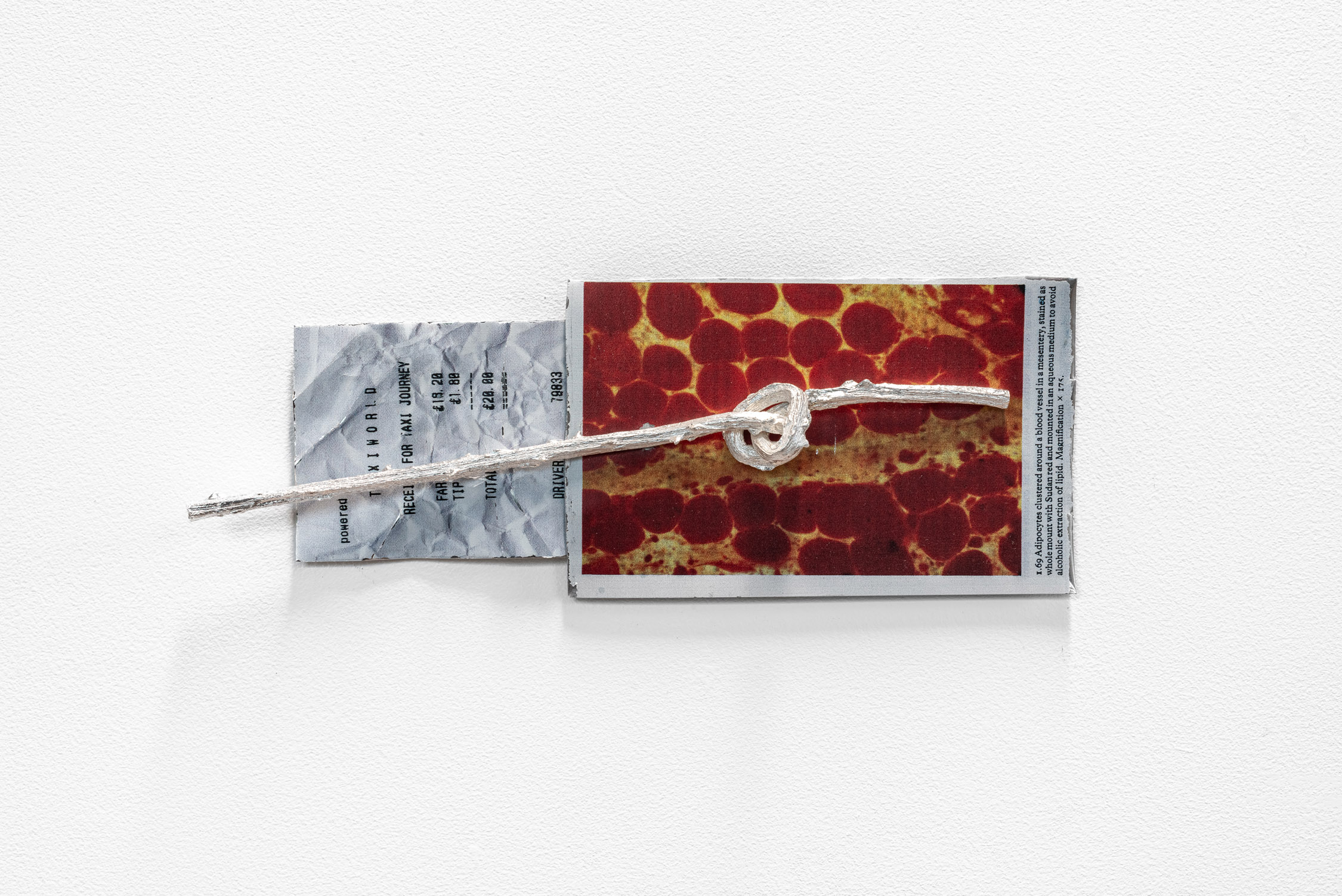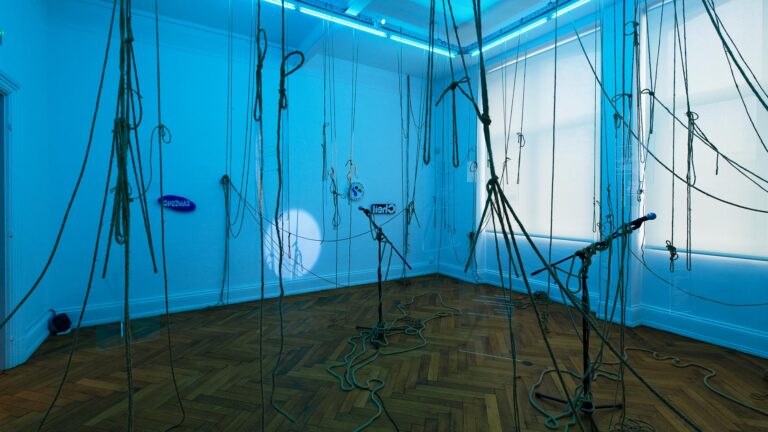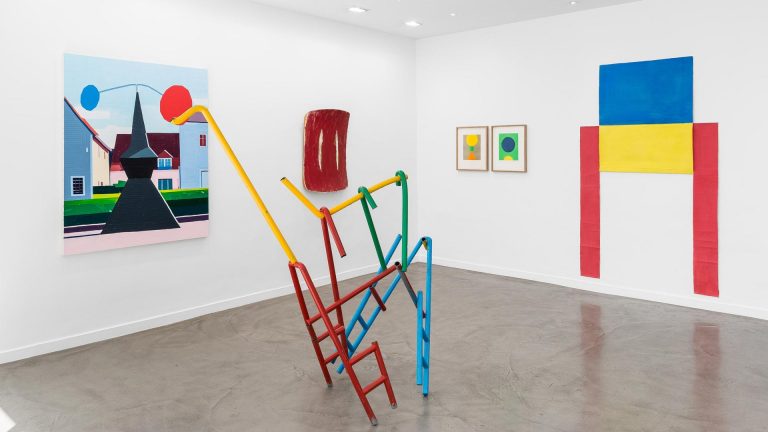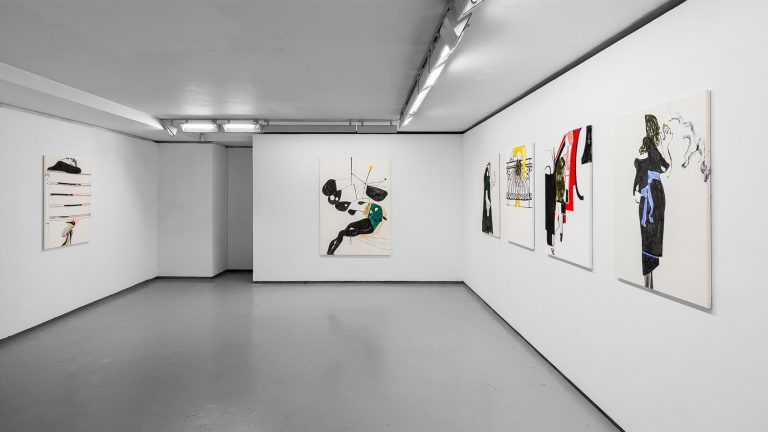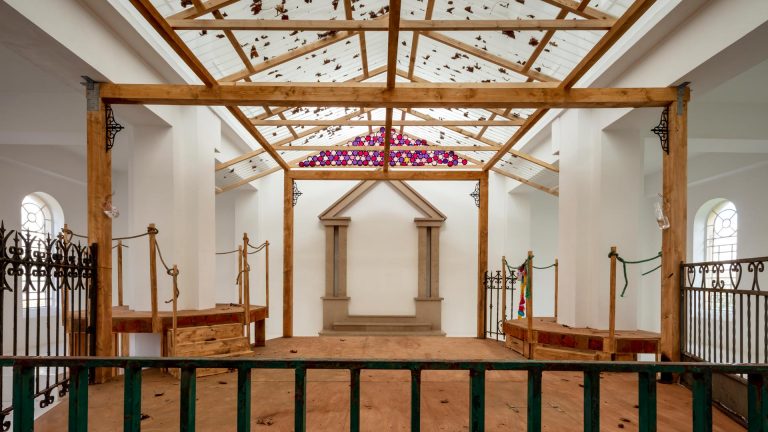Artist: Hamish Pearch
Exhibition title: Do not throw trash into the pond
Venue: Sans titre, Paris, France
Date: June 6 – July 18, 2024
Photography: Aurélien Mole / all images copyright and courtesy of the artist and Sans titre, Paris
“A paper-thin layer” around a sphere of nitrogen, hydrogen and oceans; just a membrane surrounding a sphere in the middle of nothingness – it is with this image that the astronaut Ron Garan describes the atmosphere of the Earth, observed from space. Created upon returning from an expedition carried out in 2008, his blog Fragile Oasis testifies to what has been called “the overview effect”: an emotional and cognitive disorder that affects astronauts at the sight of their planet, an interstellar Stendhal syndrome in which the immensity of the void makes them realize the smallness of everything else.
There is something of this clash in scale, of a visual and affective disruption, in the work of Hamish Pearch. His “overview affect” is not that of an orbital capture at 360°, but of a relativization in which the infinitesimal is felt as much as the cosmos. In playing with size, his works attempt to capture portions of infinity. In bins, in bags, in Siamese cups with centripetal forces – so many containers where scientific schemas meet the grammar of dreams. Pearch disrupts logical discourse with a lexicography of images made up of unexpected twinning and fortuitous equations. He measures the gaps and equivalences between a thing, its double, and its quadruple miniature, as in his image of a brain held in place by bits of chewing gum that offer a disturbing resemblance. “Mapping out the world with diagram and objects,” reads the subtitle of one of Pearch’s pamphlets. It is from this logic that his assemblages arise. They aim to trace the world in terms of its materials, to organize it in terms of what we chew and what we pick up, to scratch the bottom of bags to see what we find there.
There is a reconstruction of the universe via bricolage, wherein the azure of an oxidized mushroom imitates a planet and integrates into a system at once solar, cellular, and economic. Pearch piles up all three systems, tearing out the pages of astronomy textbooks and covering them with medical imaging or invoices, or with opaque molecules in the form of paperweights. Elements resist gravity here; they affect each other and press against each other, like a leaf plucked from in front of the atelier, fossilized in bronze, and held further in place by another of these paperweight marbles. It’s because everything still risks levitating, being rendered weightless, like in a space shuttle.
The exhibition itself mimics takeoff: the gallery entrance reenacts the ritual of the airport security check, with a large counter for unzipping suitcases. Do not throw trash into the pond takes up the tone of signage. The title rings out in warning: do not throw anything into the pond, keep everything in your pockets; empty them into bins transformed into display cases, sealed with a pane, with wire, cut with the precision of a jigsaw. Pearch literally empties his bag, like a confession, a portrait en creux composed of what he has kept. Tell me what you’re carrying, I’ll tell you who you are – or “What’s in your handbag?” to cite Vogue’s celebrity questionnaire. A Chanel backpack? You are pragmatic; unstoppable, you can’t stay still! (Margot Robbie). An Isabelle Marant clutch, inside a Prada bag? You are foresighted, ready to brave the unexpected (Gigi Hadid).
Pearch revisits the intrecciato typical of Italian leather goods to his own ends. Made in a Milanese artisanal foundry, a bag’s basket intertwined with flowers camouflages only a toad, for which it serves as a nest. Neither makeup, nor passport, none of the accoutrements of travel that ratify or reshape identity – just this amphibian. It underlines Pearch’s attraction to mutation, of which the toad who dreams of being a prince is a time-honored symbol. Of this transformation for which a kiss would suffice, Pearch has kept only the tongue: during one of our conversations, he mentions the toad-licking practiced by certain visitors to the Sonoran desert, who are eager to lick the incilius alvarius, a frog whose skin is said to contain psychotropic secretions. What if metamorphosis has only ever been the effect of tripping?
Pearch plays on the polysemy of the word in English. Here the journey is one in which perception changes with altitude – to the point of seeing in a peanut the possibility of a precious stone; of contemplating the Milky Way in a tartan fabric studded with chewing gum; of transforming an envelope of pustules into a translucent surface. From a ship to a taxi of which only the receipt remains, Do not throw trash into the pond is a matter of transport, baggage, and moltings. Pearch turns over clothing fabrics, looks under the epidermis, enlarges cells to see maps. The exposure goes to the edges of the eye to stretch the mucous membrane. It’s about letting deformations happen, being moved by our memories, by this trash lost at the bottom of pockets and among the cliffs. Then the smallest thing can shine like a star. It is an intoxication and an inversion comparable, the author Daphné B. tells us, to that provoked by the overview effect: “[…] From space, we can even see the scars that run across the surface of the Earth […], the erosion of its lands, the borders traced on its gridded flesh. Plunged into a euphoric state, the overwhelmed astronauts are filled with love, empathy and care for [the Earth]. The spectacle of fragility is hypnotizing. It is also said that it is the favorite activity of astronauts on missions, staring down at the Earth and getting drunk on its flaws.”(1)
Salomé Burstein
[1] Daphné B., Maquillée. Essai sur le monde et ses fards, Paris, Grasset, 2021, p. 55.
